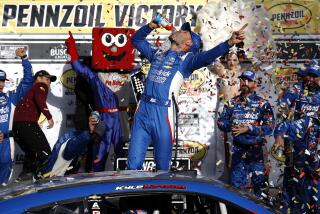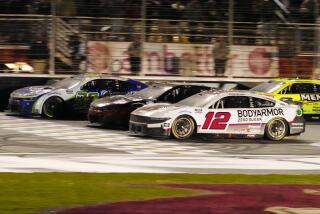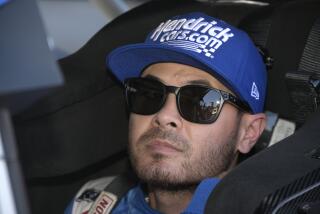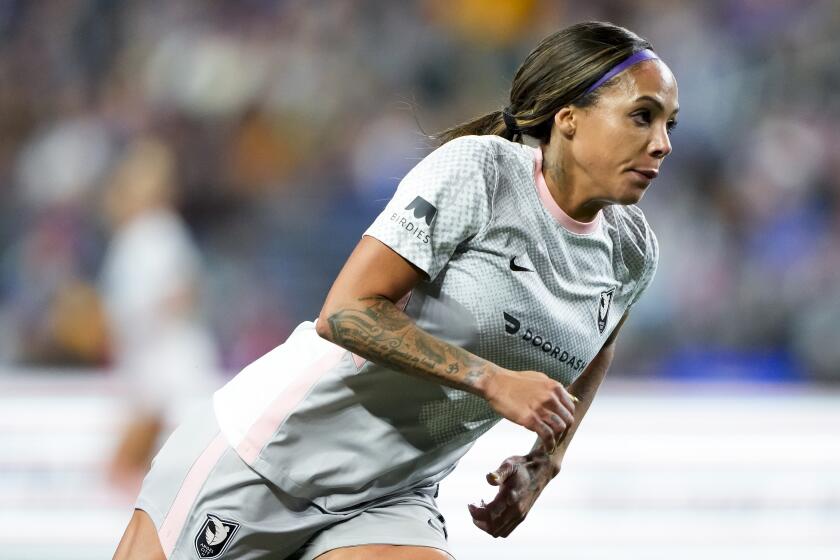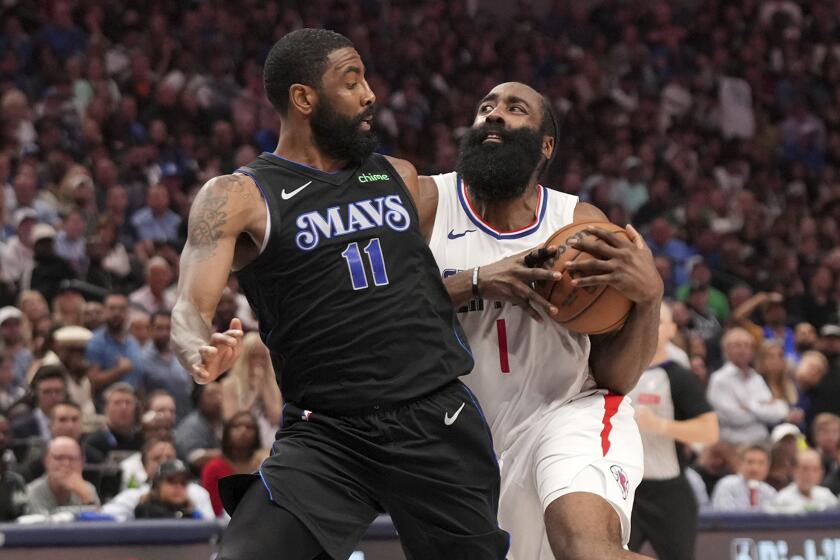Danica Patrick’s disappointing season reflects a need for more speed
Now that Danica Patrick has wrapped up her first full season in NASCAR’s top-level Sprint Cup Series, how did she do?
A cold look at NASCAR’s statistics shows that the celebrated driver struggled throughout her initial 36-race Cup season. Patrick, on average, started in 30th place among 43 cars racing each week — indicative of her inability to do well in qualifying. Her average finish was 26th.
Patrick, 31, certainly had good race cars. Her team, Stewart-Haas Racing, is co-owned by three-time Cup champion Tony Stewart and is widely considered one of the best in the business.
Driving the No. 10 Chevrolet, Patrick finished 27th in the Cup championship standings this year, a whopping 1,773 points behind champion Jimmie Johnson. But she finished higher in points than three more-experienced Cup drivers who also drove the full season — David Ragan (28th), Travis Kvapil (31st) and David Reutimann (33rd).
Patrick had only one top-10 finish: an eighth in the season-opening Daytona 500, in which she also captured her one pole position of the season, becoming the first woman to win a pole in Cup history. Daytona (as well as Talladega) is an unusual track in NASCAR; because of restrictions placed on horsepower, the drivers mostly stay in closely bunched packs.
Still, Patrick’s pole and her finish at Daytona — the highest ever for a woman in NASCAR’s biggest race — were notable. She also led five laps, the only time she led a race all season.
But for the next nine months, Patrick struggled nearly everywhere else.
By comparison, her boyfriend, Ricky Stenhouse Jr. — also a Cup rookie — finished 19th in the standings with one top-five and three top-10 finishes. Stenhouse, who drives for Roush Fenway Racing, was a two-time champion in NASCAR’s second-level Nationwide Series, in which Patrick also spent a year before moving up to the Cup series. Before moving to stock car racing full time, Patrick drove for seven years (2005-11) in the IndyCar Series.
To use another comparison, former Indianapolis 500 winner Juan Pablo Montoya finished 20th in the standings in his rookie year in the Cup series, in 2007. Montoya, a former Formula One driver, won one Cup race that year, one of six top-10 finishes for the Colombian.
But another Indy 500 winner, Sam Hornish Jr., fared worse than Patrick in his first Cup season in 2008. Hornish ran all but two of the 36 races and finished 35th in points with an average finish of nearly 30th. He did not have a top-10 finish, did not win a pole and led only two laps all year.
Other statistics illustrate Patrick’s difficulties, especially her inability to catch up to the leaders.
She was on the lead lap an average of 41% of the time, ranking 29th in that category. She raced among the top 15 cars only 7.3% of the time, ranking 28th, and she failed to race among the top 15 in 14 races.
Stenhouse, by comparison, was a top-15 driver 26% of the time and he failed to run among the top 15 in only three races.
NASCAR also tracks each driver’s “quality passes,” whenever they passed a car running in the top 15 under green-flag conditions. It’s an indicator of whether the driver was aggressively pushing to get toward the front.
But in 16 races this year Patrick had zero quality passes. Stenhouse had only three races without quality passes.
Another statistic reflects better on Patrick. It looks at what position the driver held with 10% of the race remaining compared with how she finished.
In 18 races this year, Patrick finished at least one position higher over that remaining 10% of the race. Of course, in some cases that simply could have been because of a car ahead of her dropping out because of a crash or mechanical problem.
Regardless, Stenhouse bested her in that category too, with 23 races in which he improved his position during the final 10% of the race.
Before Sunday’s season finale at Homestead-Miami Speedway, where Patrick finished 20th, she reflected on her rookie season.
“There are going to be times when I do better than you expect, and there are going to be times where I do worse than you expect,” she said in pre-race notes distributed by her team.
“That path is going to happen for a couple of years, until you can get into a rhythm and know what you’re doing.”
Twitter: @PeltzLATimes
More to Read
Get our high school sports newsletter
Prep Rally is devoted to the SoCal high school sports experience, bringing you scores, stories and a behind-the-scenes look at what makes prep sports so popular.
You may occasionally receive promotional content from the Los Angeles Times.
